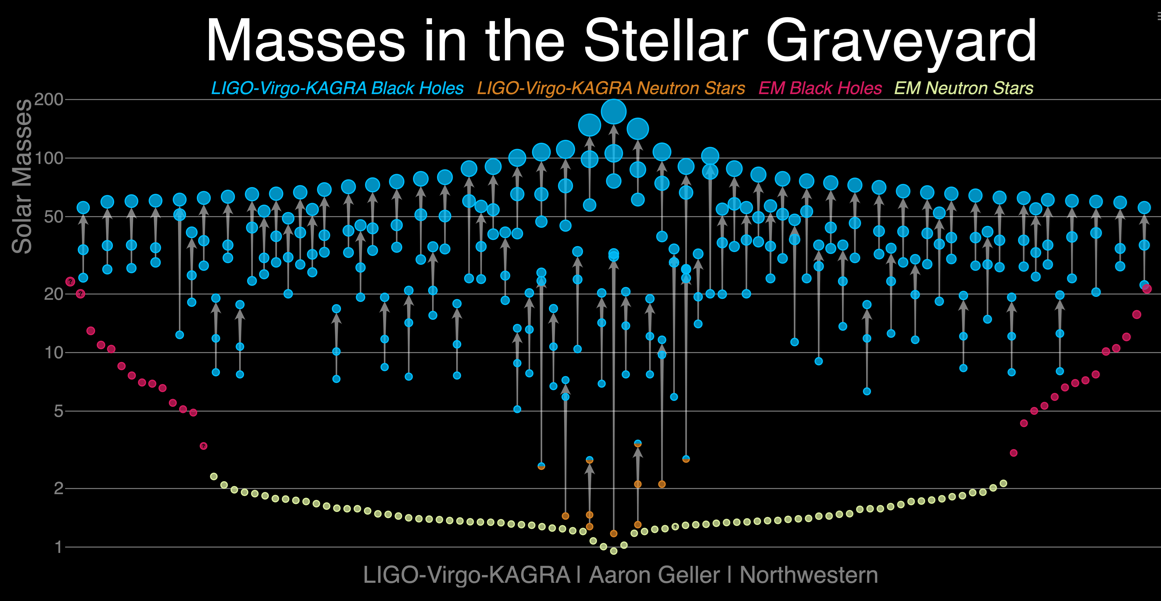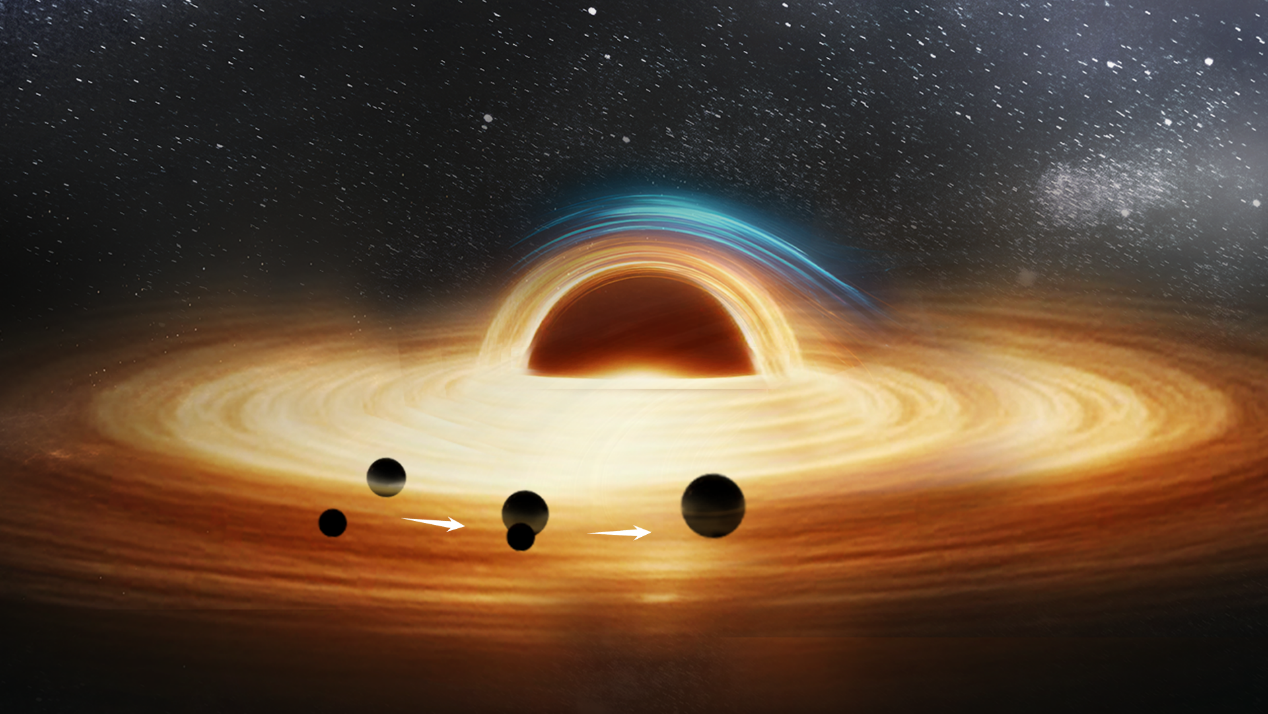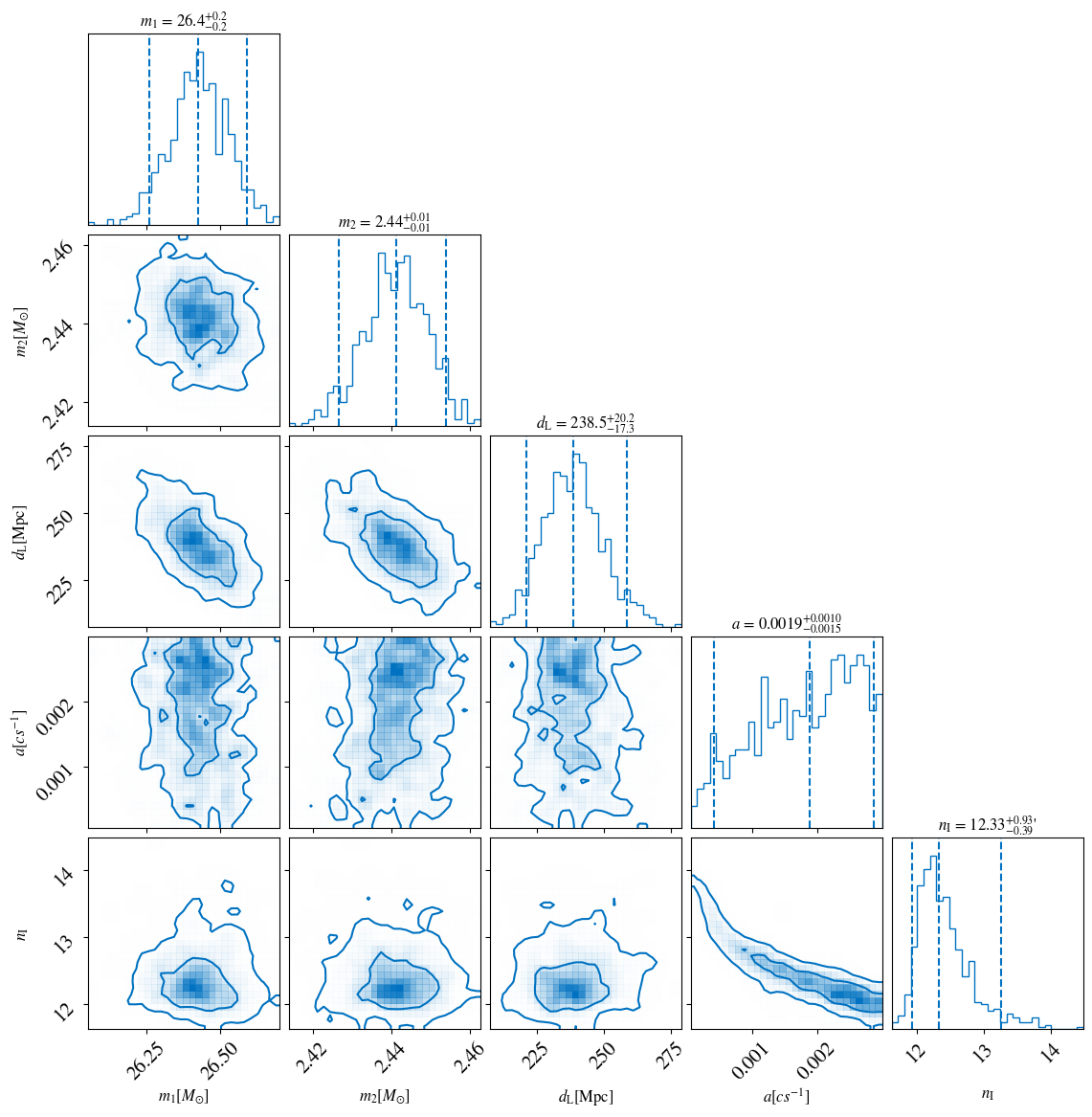"Mysterious Giant" Behind Binary Black Holes? Shanghai Astronomical Observatory Research Team Discovers First Evidence of a Third Compact Object!
The binary black holes in the universe are already astonishing enough, but researchers from the Shanghai Astronomical Observatory of the Chinese Academy of Sciences have made a groundbreaking discovery: these binary black holes may not be "lonely wanderers" after all—there could be an even more mysterious "giant" lurking behind them! Recently, a research team led by Dr. Wen-Biao Han at the Shanghai Astronomical Observatory achieved a major breakthrough in gravitational wave astronomy, uncovering the first evidence that a binary black hole merger event may have occurred near a third compact object. This finding provides new clues to unraveling the mystery of binary black hole formation. The results were published on August 1, 2025, in the international astronomy journal The Astrophysical Journal Letters.

Figure 1: Gravitational wave events released by the LIGO-Virgo-KAGRA collaboration.
Since the first detection of gravitational waves in 2015, the LIGO-Virgo-KAGRA collaboration has observed over 100 gravitational wave events, most of which originated from binary black hole mergers. These events have provided critical data for understanding the physics of binary black hole mergers, but the mechanisms behind their formation and evolution remain unclear.
Dr. Wen-Biao Han, the corresponding author of the paper and head of the gravitational wave research group at the Shanghai Astronomical Observatory, explained: "In 2018, my collaborators and I first proposed the b-EMRI model, where a supermassive black hole captures a binary black hole, forming a 'trio' [1]. The binary black holes 'dance' around the supermassive black hole, emitting gravitational waves across multiple frequency bands. This system was later included in the LISA's white paper and listed as a unique source for China's space-borned gravitational wave detection projects." Since then, the team has been searching for evidence of binary black hole mergers near supermassive black holes in LIGO-Virgo data.

Figure 2: Binary black hole merger near a supermassive black hole.
Through their analysis, the team focused on the gravitational wave event GW190814. Dr. Shu-Cheng Yang, the first author of the paper, noted: "The two black holes in GW190814 are quite unusual, with a mass ratio of nearly 10:1. Such an extreme pairing suggests they may have once been part of a tripple system with a supermassive black hole, gradually drawn closer by gravitational interactions. Alternatively, they could have formed in the accretion disk of an active galactic nucleus, nudged together by the gravitational influence of surrounding compact objects before merging [2, 3]."
The team observed that if a binary black hole merges near a third compact object, the orbital motion around the third object would produce a line-of-sight acceleration—an acceleration along the observer's line of sight. This acceleration would alter the gravitational wave frequency through the Doppler effect, leaving a distinct "fingerprint" in the signal. To detect this signature, the team developed a gravitational waveform template incorporating line-of-sight acceleration and applied Bayesian inference to analyze several high signal-to-noise binary black hole events. The results showed that for GW190814, the model with line-of-sight acceleration significantly outperformed the traditional "isolated binary black hole" model. The line-of-sight acceleration was estimated at approximately 0.002 c s-1 (90% confidence level, where *c* is the speed of light), with a Bayesian factor (a measure of model credibility) of 58:1, strongly supporting the conclusion that line-of-sight acceleration was present.

Figure 3: Parameter estimates for GW190814, including the masses of the two black holes (*m*~1~ and *m*~2~), luminosity distance (*d*~L~), line-of-sight acceleration (*a*), and power-law index (*n*~I~). Dashed lines indicate median values and 90% confidence intervals. Contour plots show 50% and 90% confidence ranges.
"This is the first international discovery of clear evidence for a third compact object in a binary black hole merger event," said Dr. Han. "This finding suggests that the binary black holes in GW190814 may not have formed in isolation but were part of a more complex gravitational system, offering significant insights into the formation pathways of binary black holes."
With the next generation of ground-based gravitational wave detectors (e.g., Einstein Telescope, Cosmic Explorer) and space-based detectors (e.g., LISA, Taiji, TianQin) coming online, scientists will be able to capture subtle variations in gravitational wave signals with even greater precision. Future observations may reveal more events like GW190814, helping humanity better understand the formation and evolution of binary black holes.
Paper link: https://iopscience.iop.org/article/10.3847/2041-8213/adeaad
Further Reading:
[1]Chen, X. & Han, W.-B. Extreme-mass-ratio inspirals produced by tidal capture of binary black holes. Communications Physics 1–7 (2018)
[2] Tagawa, H., Haiman, Z. & Kocsis, B. Formation and Evolution of Compact-object Binaries in AGN Disks. ApJ898, 25 (2020).
[3] Samsing, J. et al. AGN as potential factories for eccentric black hole mergers. Nature Publishing Group603, 237–240 (2022).
Scientific Contact:
Wen-Biao Han, Shanghai Astronomical Observatory, Chinese Academy of Sciences
Email: wbhan@shao.ac.cn
Download attachments: